Lean against the wooden railing and look out to sea. The wind off the Atlantic Ocean brings sounds of the surf and seabirds, as well as the scent of the salt water. Look down to the ocean, hundreds of meters below. The ocean pounds against the shore and roils as it curls around the inlet. Across the bay, grey cliffs rise up from the water. Look closely, and you can see the marks in the stone: lines of dots forming trails across the nearly vertical stone. Those are the tracks of dinosaurs, laid down millions of years ago.




These are ichnofossils, or trace fossils: not fossils of the animals themselves, but evidence of their having been there. As they show a record of the animals’ movement, they give us insight into their behaviour. In particular, these footprints show the dinosaurs moving in a herd. They show the animals, juvenile sauropods (four-legged herbivores), walking in straight lines together. (Or, in at least two cases limping together, as the separation of prints is alternatively short and long).
The land they walked on was not vertical back then: the dinosaurs walked across a muddy plain, probably a shallow lagoon or pond. The prints were made in the mud, and then buried under more sediment. The mud then turned into limestone, and over the years tectonic shifts raised the stone, forming a cliff face. As the cliff weathered and sheets of stone came off, the dimples made by the footprints became exposed.
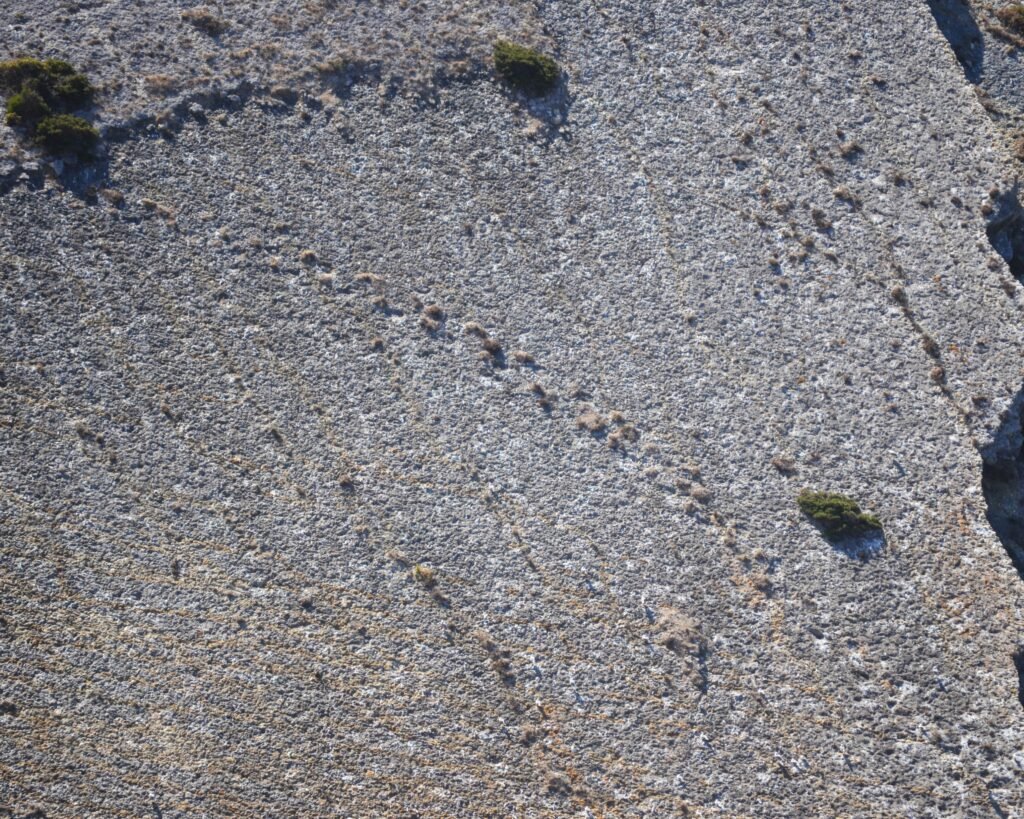
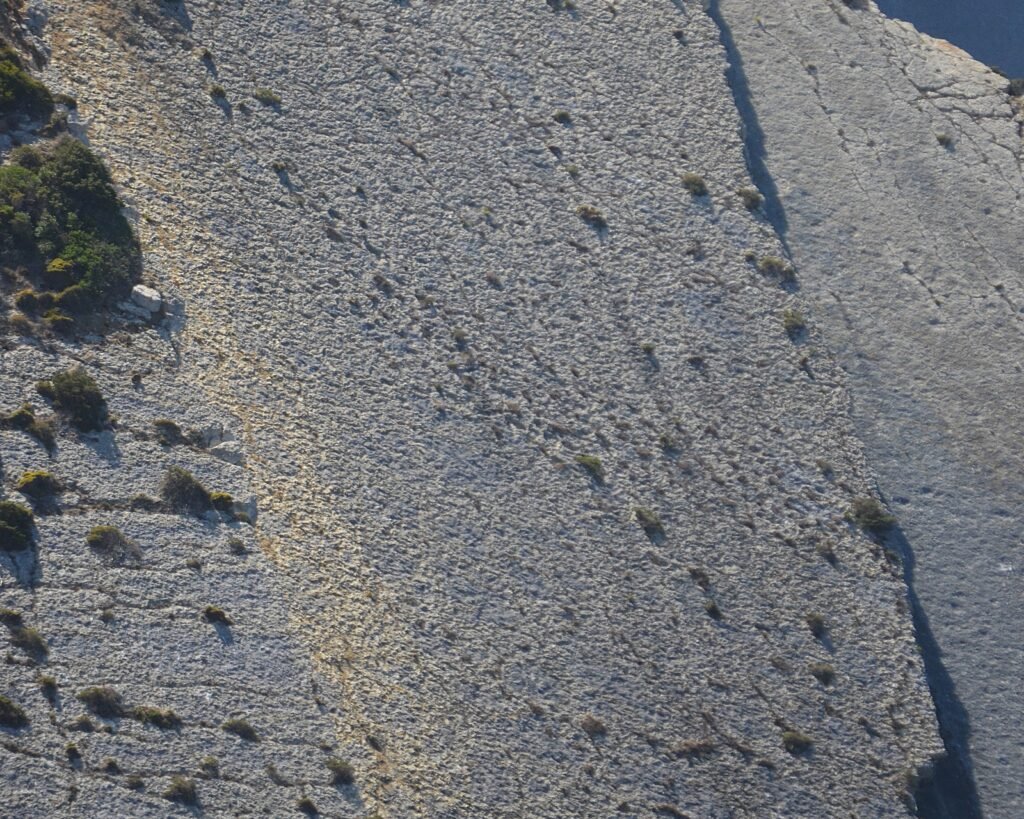
The site has been extensively studied by paleontologists, and it is considered one of the earliest and finest examples of grouped dinosaur tracks in Europe. The series of trails contain around 700 prints in 38 trails of sauropods and 2 trails of theropods (carnivorous two-legged dinosaurs), and they show individuals moving in parallel tracks with synchronized gait, showing group behaviour.
The trails have been known for centuries, and lend themselves to legends about the area. The story goes that a giant mule (mua) carried Our Lady (Mary) from the sea to the top of the cliff, leaving hoofprints in the stone. (Pedra da Mua means Mule Stone, and the church on the point has also been known as the Sanctuary of Our Lady of Pedra da Mua.
Location
The Natural Monument is on Cape (Cabo) Espichel, in the Setúbal district. The footprints are on the cliffside of the Cabo Espichel …but the viewpoint from which you can see them is across the bay. (To see them up close, you need climbing gear or a helicopter!)
Access
The site is very easy to reach. The road out to Cabo Espichel is well signposted, and there is a signposted car park just before reaching the convent (Santuário da Nossa Senhora do Cabo Espichel). There is a wide and easily navigable dirt road that goes to the monument. The walk is about 1.3km to the monument, on solid dirt road. The gradient is not very steep.

Signage
On the road, there is a sign to the Pedra da Mua natural monument of dinosaur footprints (“pegadas”). In the car park there are trail signs, pointing out both Pedra da Mua and Lagosteiros. There are also notice boards with a map of the hiking trail (in Portuguese) and more information about the fossils (in English and Portuguese).

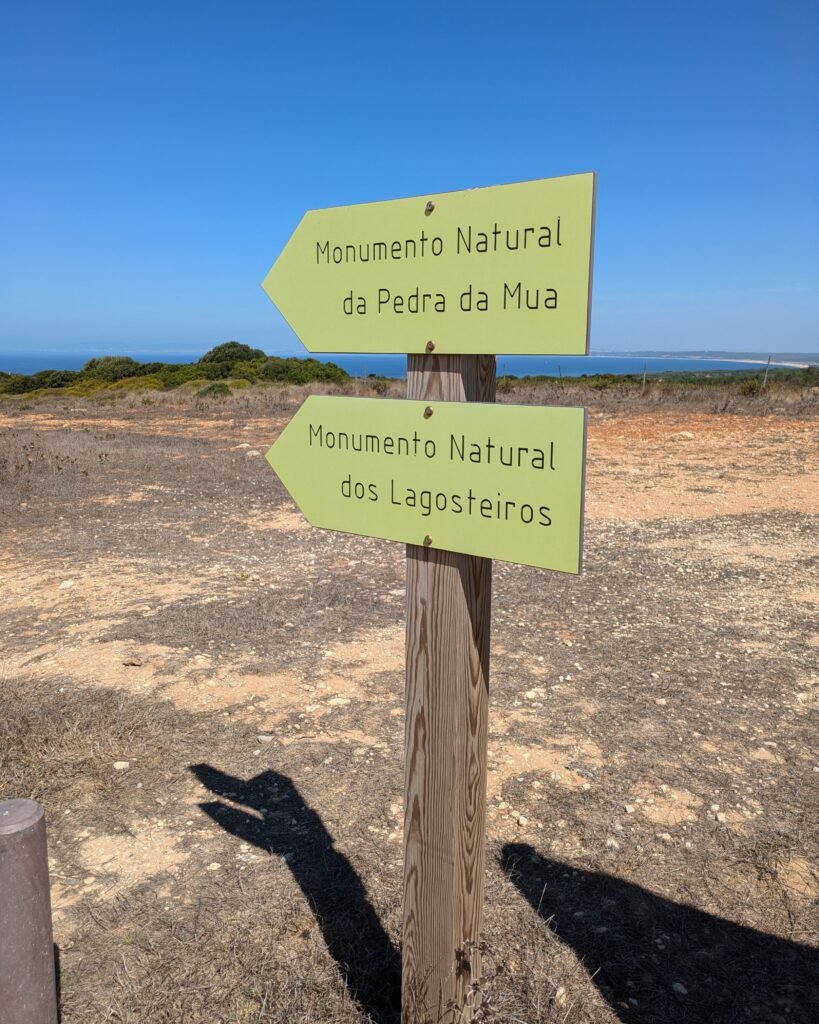
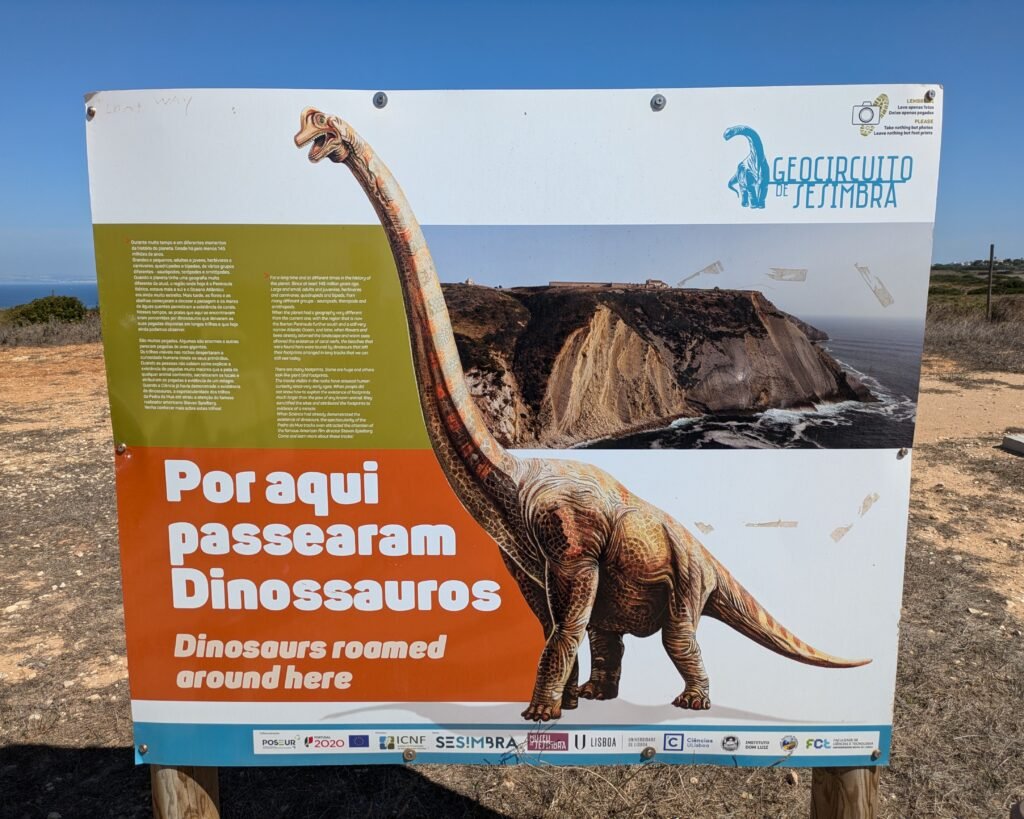
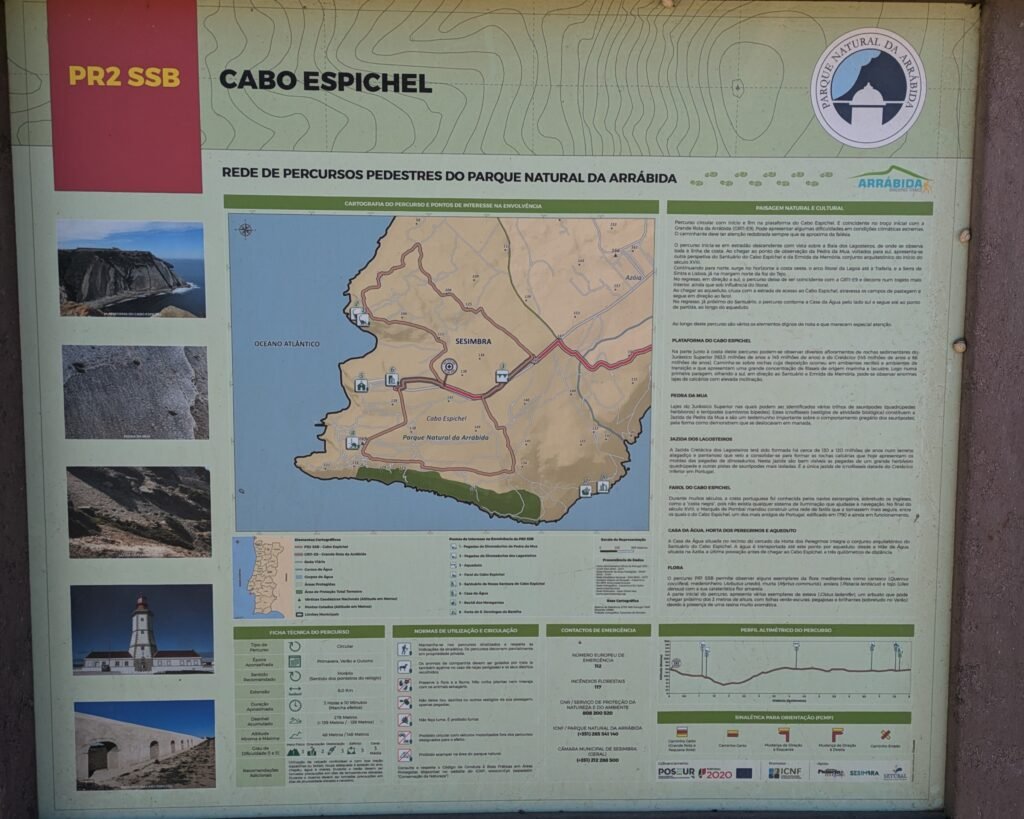
After you follow the trail for about 1.3 km, you will see a wooden railing along the cliff edge. From there you can look out to the Pedra da Mua Natural Monument across the bay. There is a noticeboard with information in both Portuguese and English explaining the fossils.

Links
- Article (in Portuguese) from Wikipedia (some information in English here)
- Description (in English) from Natural.pt
- Description (in Portuguese) from Sesimbra.com
- Description (in Portuguese) from Portugal em Pedras
- Video (in Portuguese) from NOVAPaleo/João Oliveiro (paleontology student from University Nova of Lisboa)
- Technical information (in Portuguese) from Geoportal of LNEG (Laboratório Nacional de Energia e Geologia)
- Description (in Portuguese) from ICNF (Instituto da Conservação da Natureza e das Florestas)
- Description (in Portuguese) and designation as a Natural Monument by the Directorate-General of Cultural Heritage
Nearby
The viewpoint is only a few meters away from the Lagosteiros Natural Monument, which has much more recent footprint fossils – only 130 million years old! There is also the natural monument of dinosaur footprints at Pedreiro do Avelino, which is in the village of Zambujal, about 11km away on the road from the cape towards Sesimbra.

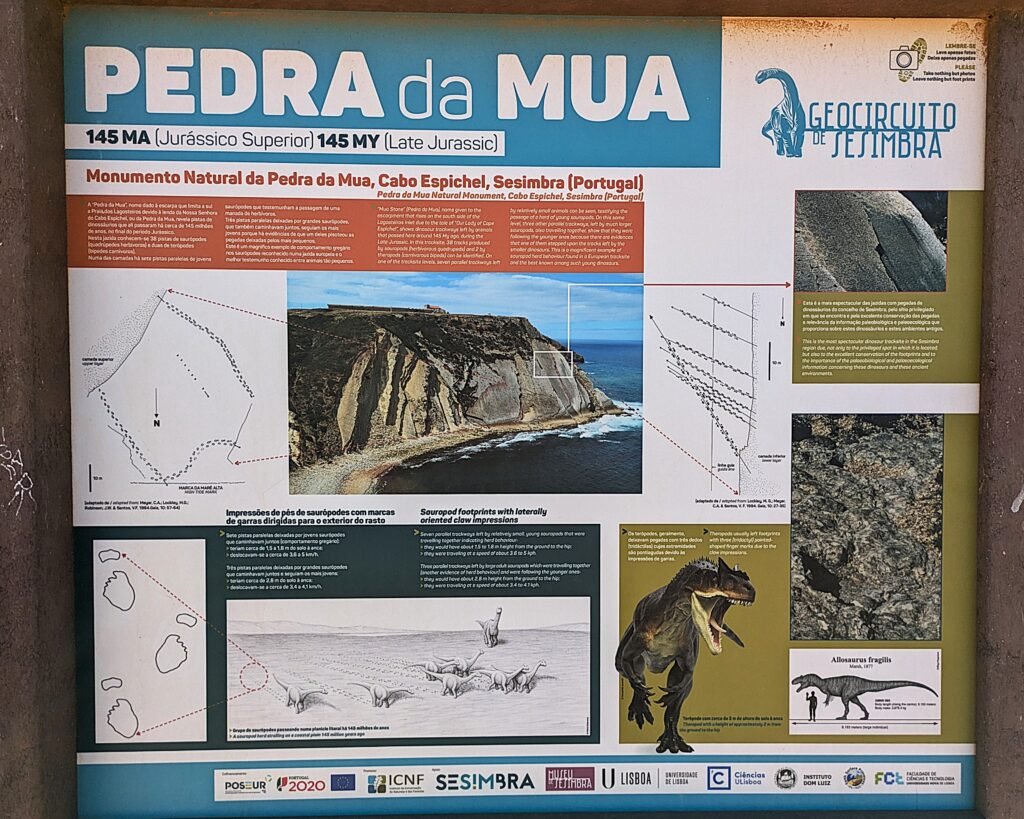
Pingback:Lagosteiros Natural Monument - Prehistoric Portugal